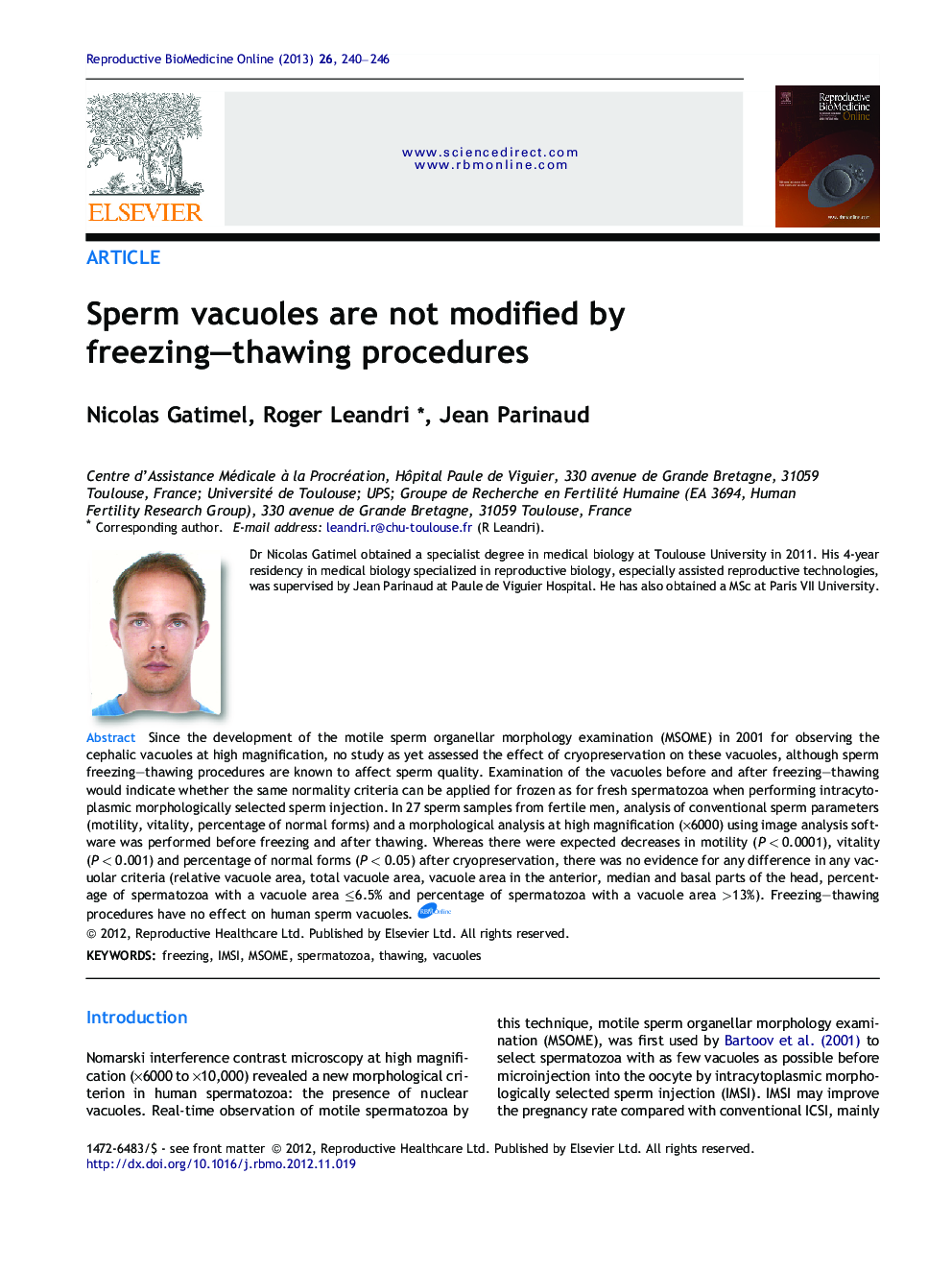| کد مقاله | کد نشریه | سال انتشار | مقاله انگلیسی | نسخه تمام متن |
|---|---|---|---|---|
| 3970662 | 1256724 | 2013 | 7 صفحه PDF | دانلود رایگان |

Since the development of the motile sperm organellar morphology examination (MSOME) in 2001 for observing the cephalic vacuoles at high magnification, no study as yet assessed the effect of cryopreservation on these vacuoles, although sperm freezing–thawing procedures are known to affect sperm quality. Examination of the vacuoles before and after freezing–thawing would indicate whether the same normality criteria can be applied for frozen as for fresh spermatozoa when performing intracytoplasmic morphologically selected sperm injection. In 27 sperm samples from fertile men, analysis of conventional sperm parameters (motility, vitality, percentage of normal forms) and a morphological analysis at high magnification (×6000) using image analysis software was performed before freezing and after thawing. Whereas there were expected decreases in motility (P < 0.0001), vitality (P < 0.001) and percentage of normal forms (P < 0.05) after cryopreservation, there was no evidence for any difference in any vacuolar criteria (relative vacuole area, total vacuole area, vacuole area in the anterior, median and basal parts of the head, percentage of spermatozoa with a vacuole area ⩽6.5% and percentage of spermatozoa with a vacuole area >13%). Freezing–thawing procedures have no effect on human sperm vacuoles.A new concept for observing the fine morphology of spermatozoa at high magnification (×6000) with an inverted microscope and a numeric camera using differential interference contrast, motile sperm organellar morphology examination, allows the visualization of some abnormalities, in particular the presence of vacuoles on the head of spermatozoa. There are still many questions about the origin of these vacuoles but they appear to be related to sperm DNA damage and to affect embryo developmental potential. Despite the success of cryopreservation of spermatozoa in assisted reproductive technology, the freezing–thawing process is associated with impairment of sperm quality. The aim of this study was to assess the impact of freezing–thawing procedures on human sperm vacuoles, in order to discover whether the same normality criteria can be used for frozen as for fresh spermatozoa. We analysed 27 sperm samples from fertile men by conventional sperm parameters (motility, vitality, percentage of normal forms) and a morphological analysis at high magnification using image analysis software before and after freezing–thawing. Whereas we found expected decreases in motility, vitality and percentage of normal forms after freezing–thawing, no evidence was found for any difference in vacuolar criteria at high magnification (relative vacuole area, vacuole areas or percentage of spermatozoa with small and large vacuoles). This study demonstrates that freezing–thawing procedures have no effect on human sperm vacuoles.
Journal: Reproductive BioMedicine Online - Volume 26, Issue 3, March 2013, Pages 240–246